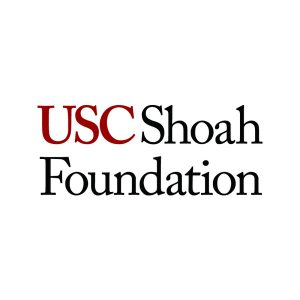
The Shoah Foundation Visual History Archive (VHA) at the University of Southern California serves to document the experience of Holocaust survivors and tell their stories. Since its founding, it has recorded over 50,000 Holocaust testimonies in 43 languages, which it has made available online and through 170 full access sites around the world.
The Shoah Foundation was established in 1994 with the support of Stephen Spielberg, who was famously inspired by meeting Holocaust survivors while filming Schindler’s List. It was not the first or only effort to document Holocaust survivor testimonies, but over the past quarter-century it has become the most prominent. Its continuing mission, especially as Holocaust survivors pass away, is to preserve these testimonies, make them available for research, and contribute to public education about the Holocaust and other twentieth-century genocides.
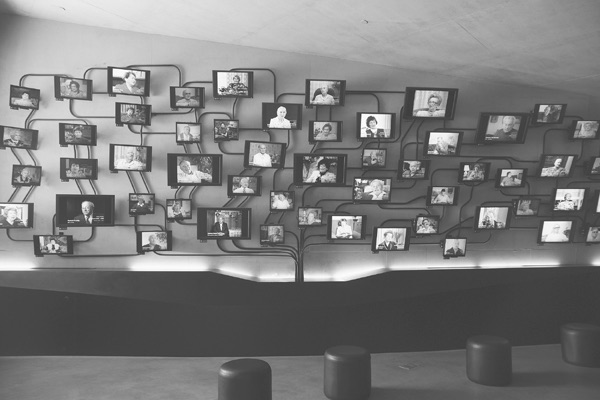
The Shoah Foundation, along with other Holocaust testimony archives like the Fortunoff Archive at Yale University, offer important resources for understanding the Holocaust and other genocides from the point of view of the victims. That is to say, the earliest research on the Holocaust, like Raoul Wallenberg’s monumental study The Destruction of European Jewry (1951), was produced on the basis of historical documents and other materials of the Nazi regime itself, primarily because this material was available. More recent scholarship, like Saul Friedländer’s two-volume Nazi Germany and the Jews (1998), have often sought to showcase the perspective of the victims through the use of memoirs, testimonies, and other primary sources that tell the story of the Holocaust in their own voices. The formation of Holocaust testimony archives helps to offer more of these perspectives as we continue to include the survivors’ voices in our telling of the Holocaust.
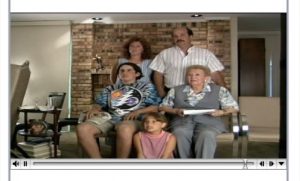
The Shoah Foundation’s interviews, most of which are 3-4 hours in length, were recorded in person with survivors, oftentimes in their own homes. The interviews were also conducted in their native languages, so not all are in English. Interviews are generally structured around a tripartite format: telling the story of their early life prior to the Holocaust or other genocide; describing their experiences of survival; and post-genocide life. Oftentimes, interviewees display historical photographs and other physical objects relating to their experience, and are sometimes joined by their families, with children and grandchildren, at the conclusion of the interview.
The Shoah Foundation developed an innovative tagging system for the interviews. Indexers watch testimonies in their entirety and tag each 60-second segments with names, places, and topics that the survivors discuss. This allows researchers to search through the entire database in a detailed and unique fashion.
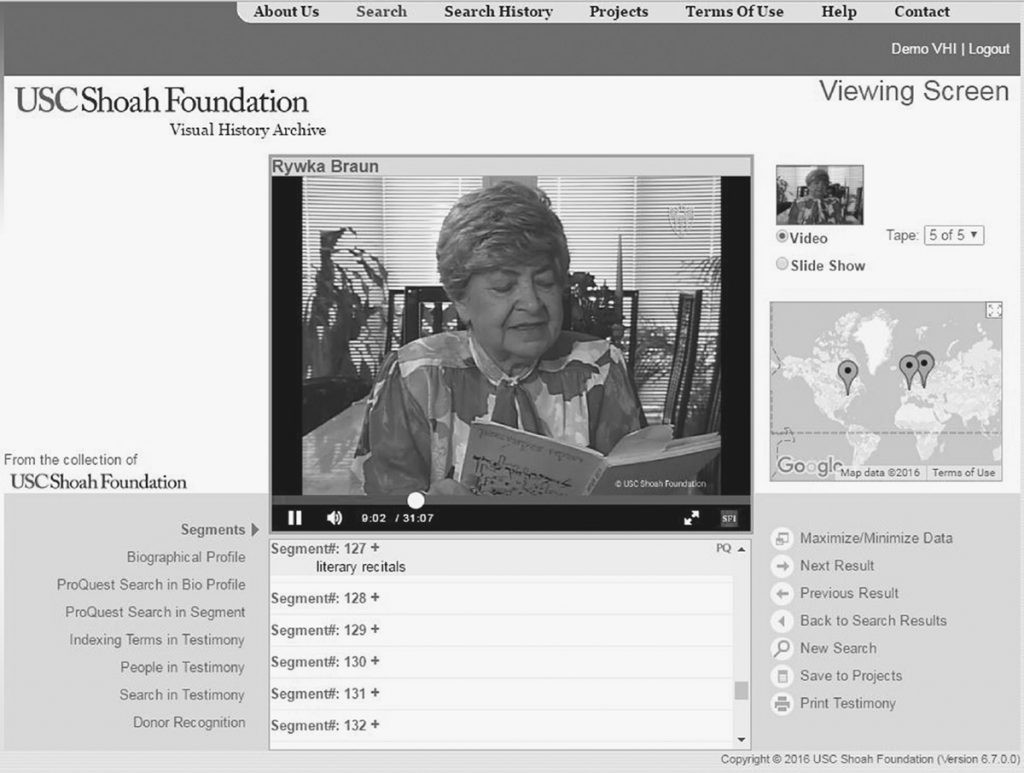
The Shoah Foundation supports research in Holocaust studies as well as comparative genocide. Its Center for Advanced Genocide Research sponsors annual conferences and numerous research fellowships. The Shoah Foundation has also used its testimony methodology to help document other genocides including the Armenian genocide, the Rwandan genocide, as well as ongoing genocide and violence in Syria and Myanmar. As a result, the Shoah Foundation has become an important research center in the documentation and study of genocide writ large.
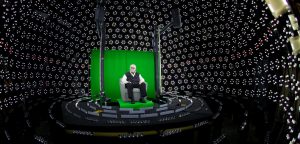
In addition, the Shoah Foundation has pursued tremendously innovative projects like “Dimensions in Testimony” (formerly New Dimensions in Testimony). Whereas it has long been possible for Holocaust survivors to speak about their experiences at schools and elsewhere, eventually we will enter a time when there are no more living Holocaust survivors simply due to the passage of time. The Shoah Foundation’s efforts to record these testimonies serves to preserve them for posterity. However, the Shoah Foundation has tried to replicate the process of speaking with a Holocaust survivor with its “New Dimensions” project, which seeks to create a kind of “time-offset interaction” with a survivor by recording an “interactive biography” of the survivor’s testimony. In a new recording process, a survivor offers testimony in super-high-definition video against a green screen, from multiple camera angles, answering hundreds of individual questions. This process allows for the creation of a 2D video which people can interact with through speech recognition. (They are pursuing the possibility to use the many camera angles to eventually form 3D holograms when that technology is feasible.) A visitor to a museum instead of just watching a clip from a Holocaust testimony could speak into a microphone, ask a question (for instance, “where were you born?”) and then a computer would interpret the prompt and draw from the database of video recordings to answer the question. This would create a kind of person-to-person interaction with a Holocaust survivor even if they are no longer living. It is an exciting and interesting program which the Shoah Foundation has continued to develop; they have interviewed over 25 survivors of the Holocaust and other genocides for this project.
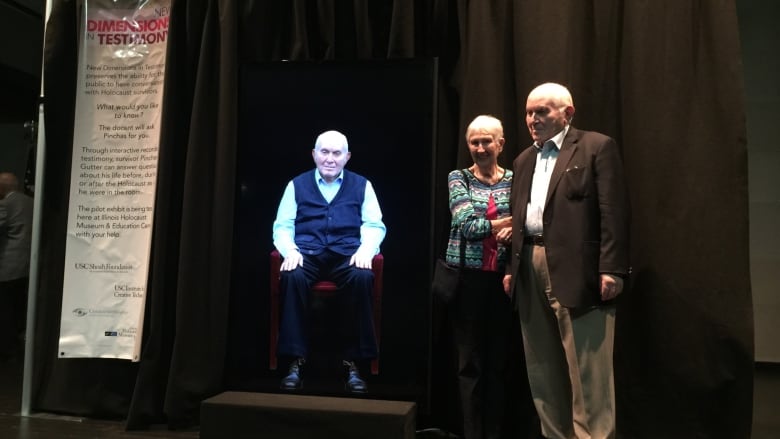
Somewhat controversially, the USC Shoah Foundation has patented its methods for tagging and organizing the survivor testimonies, and has ownership rights over the videos. As a result, the testimonies are only available in certain access sites and families of survivors must also pay fees to acquire digital copies of testimonies.
The Shoah Foundation’s testimony recordings have been used in Holocaust museum exhibits including at the the Los Angeles Museum of the Holocaust, where the permanent exhibit concludes with a large wall displaying the entire VHA collection across 70 screens on continual loop, and at the Museum of Jewish Heritage in New York City.
Research notes
The Shoah Foundation Visual History Archive is available for access at USC as well as 170 other access points, libraries and museums which have paid a subscription fee to make the archive available to their patrons, affiliates, and visitors.
The index system, where one-minute-length segments are tagged with events, locations, peoples’ names, and themes, allows researchers to quickly find discussions of specific items across numerous testimonies, and in multiple languages, without wading through hours upon hours of footage.
Further Reading and Listening
- Steven Smith, director of the Dimensions in Holocaust Testimony program, speaks about the project on the “Technically Human” podcast: “Memory Drive: The Ethics of Holocaust Memory in the Age of Virtual Reality“
- Todd Presner. “The Ethics of the Algorithm: Close and Distant Listening of the Shoah Foundation Visual History Archive.” In Probing the Ethics of Holocaust Culture, edited by Wulf Kansteiner, 175–202. Cambridge, MA and London, England: Harvard University Press, 2016.
- Noah Shenker. Reframing Holocaust Testimony. Bloomington: Indiana University Press, 2015.
- Jeffrey Shandler. Holocaust Memory in the Digital Age: Survivors’ Stories and New Media Practices. Redwood City: Stanford University Press, 2017.
- Artstein, Ron, Stephen Smith, David Traum, Oleg Alexander, Anton Leuski, Andrew Jones, Kallirroi Georgila, Paul Debevec, William Swartout, and Heather Maio. “Time-Offset Interaction with a Holocaust Survivor.” In Proceedings of the 19th International Conference on Intelligent User Interfaces (IUI) ’14, 163–68. Haifa, Israel: ACM Press, 2014.